Bach's Second Violin Concerto
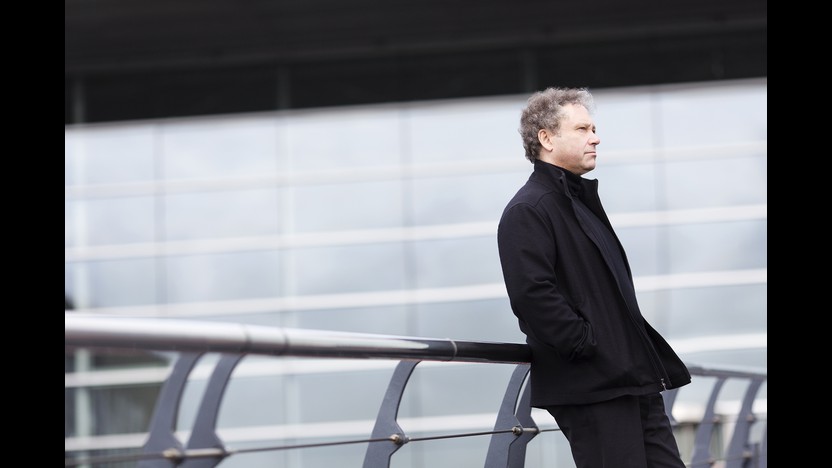


Born into a musical family, Henry Purcell spent his boyhood in London as a chorister for the Chapel Royal. His official duties as a composer and organist accounted for most of his music during the reigns of Charles II and James II, but his royal responsibilities shrunk in the wake of the Glorious Revolution of 1788. Only in the last seven years of his short life did Purcell concentrate on the theater music for which he is best known today.
King Arthur, from 1691, was the second of Purcell’s four semi-operas, a genre that combined dialogue spoken by actors with musical scene painting and songs. The librettist John Dryden drew freely from legends surrounding the king who is said to have defended the British Isles from Saxon invaders around the year 500 A.D. Some episodes stretch far outside of Arthurian legend, as when the goddess Venus sings one of the work’s most memorable melodies, Fairest Isle, a highlight of this instrumental suite. Other numbers come from dance interludes, like the Chaconne that served as the grand finale of the fifth act.
Aaron Grad ©2016
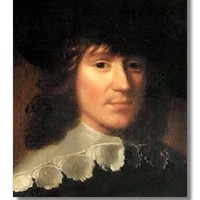
The English composer William Lawes was a master of instrumental music in the early Baroque era. He spent his most productive years working for King Charles I, which proved to be a mixed blessing; this was a monarch who was quite supportive of the arts but who was also roundly despised by his subjects, leading to civil war and ultimately his execution. Lawes himself was shot and killed during the siege of Chester, and the types of ensembles he wrote for soon fell out of favor, pushing his great contributions to the margins of music history.
The Consort Set No. 7 in C uses a typical ensemble divided into six lines: two treble, two tenor and two bass. In Lawes’ time those parts would have been played on viols, the bowed, fretted string instruments that are held in the lap and played upright. By the end of the 17th century, the various viols gave way to the violins, violas and cellos popularized in Italy. The opening movement of this Consort Set bears the title Fantasy (or “Fantazy” in Lawes’ spelling), indicating music that is allowed to develop freely, without following one set pattern or rhythm.
William Lawes ©2016
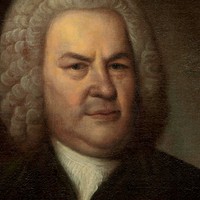
Bach probably composed his two extant violin concertos around 1730, not long after he agreed to lead the Collegium Musicum in Leipzig. This talented amateur group gave weekly performances, often in the informal atmosphere of a coffeehouse, providing Bach an outlet for secular music that would not have entered his primary duties preparing music for church services. The violin concertos in A minor and E major were among the works that Bach recast in the late-1730s as keyboard concertos, also intended for the Collegium Musicum. The six keyboard concertos provide evidence that there were likely more concertos for violin, but only the two solo concertos and a double violin concerto in D minor have survived.
Bach borrowed his template for the violin concertos from earlier Italian composers, especially Vivaldi. The E-major Concerto begins with three chords and a pause—a stock opening that can be found in some two dozen of Vivaldi’s concertos—but the ensuing treatment is classic Bach. The recognizable figure of a rising triad spread across three steady beats cascades from voice to voice and passes through a range of keys, making its most striking arrival in the ominous key of C-sharp minor. The journey to that contrasting key area proves even more significant when it turns out to be the home key of the Adagio, a poignant lament the concentrates the richest countermelodies in the lower strings. The Allegro assai finale adheres to the classic ritornello format, in which tutti statements return after each exploratory episode from the soloist.
Aaron Grad ©2013
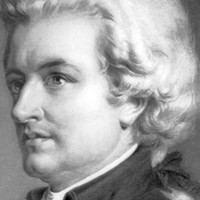
Fed up with his hometown of Salzburg and unable to find a suitable long-term job, the 25-year-old Mozart moved to Vienna in 1781. He soon established himself as the leading keyboard virtuoso in the imperial capital, and he built up a loyal following of patrons who flocked to his self-produced “benefit” concerts. The highlights of those concerts were his piano concertos, with 15 new examples introduced in the period from 1782 to 1786.
The Concerto No. 12 in A for Fortepiano was the first that Mozart created wholly in Vienna, composed in the fall of 1782 and performed during the Lenten concert season in 1783. (Operas couldn’t be staged during that solemn period in the Christian calendar, but concerts were allowed, making it a busy and profitable time for performers.) Later Mozart packaged this concerto and two others from the same period for publication, as a way to extract further income from the works. For maximum marketability, he advertised that the concertos could be played with an accompaniment of just a string quartet, a more workable combination for home use by amateurs.
The elegant first movement, starting from the quiet opening of its initial tutti section, develops the type of long, singing melodies that Mozart, the consummate opera composer, transferred into his piano concertos. The oboes and horns add noble flourishes and extra emphasis to points of arrival without carrying any responsibility so great that their absence would disrupt the proceedings.
For the central Andante, Mozart began with a tender quotation from an opera overture by J. C. Bach, who had died earlier in the year. Back when Mozart was a seven-year-old prodigy passing through London in 1763, he struck up an influential and lasting friendship with the youngest son of J. S. Bach. With this tribute in the piano concerto, Mozart seemed to affirm his deep regard for a pivotal composer whose class and refinement helped define what we now know as the Classical style.
Mozart’s recent encounters with the all-but-forgotten fugues of J. S. Bach made their mark on the finale of this concerto, with its imitative counterpoint in the piano writing and stark unison phrases from the strings. This contrapuntal awareness would continue to rise to the fore in the concertos and symphonies that Mozart penned during his miraculous final decade in Vienna.
Aaron Grad ©2016
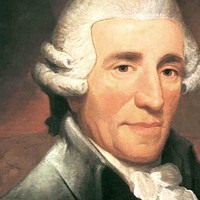
Working for the musically ravenous Prince Nikolaus Esterházy and spending much of each year at a remote country palace, Joseph Haydn acknowledged that he “was forced to become original.” One new direction he explored in the late 1760s and early 1770s was the Sturm und Drang (“Storm and Stress”) aesthetic that was also cropping up in the theater, literature and artwork of the time. This tendency toward heightened emotion and drama led Haydn to compose symphonies in minor keys for the first time; he completed seven of them in that period, including the Symphony No. 44 in E Minor that he finished by 1772.
Haydn purportedly asked for the slow movement of this symphony to be played at his funeral, and even though no such memorial performance took place, it was enough to attach the nickname of “Mourning” to the work. The opening Allegro con brio movement emphasizes tense dissonances that yearn to resolve toward more settled tones, and then the E-minor tonality carries over to the Menuet, built as a canon in which the bass instruments follow a measure behind the violins.
The Adagio third movement is the least mournful music in this symphony, with its long, arcing phrases delivered by muted strings in the sweet key of E-major. The turbulence of E-minor returns for a brisk finale filled with unison exclamations that echo the texture of the opening movement.
Aaron Grad ©2025
The March 4 concert is currently sold out. Click the wait list link above to be added to a free waiting list. You will be contacted if tickets become available.
Get driving directions and find nearby parking.
Find dining options close to the venue.
View seating charts to find out where you'll be seating.
Get driving directions and find nearby parking.
Find dining options close to the venue.
View seating charts to find out where you'll be seating.
